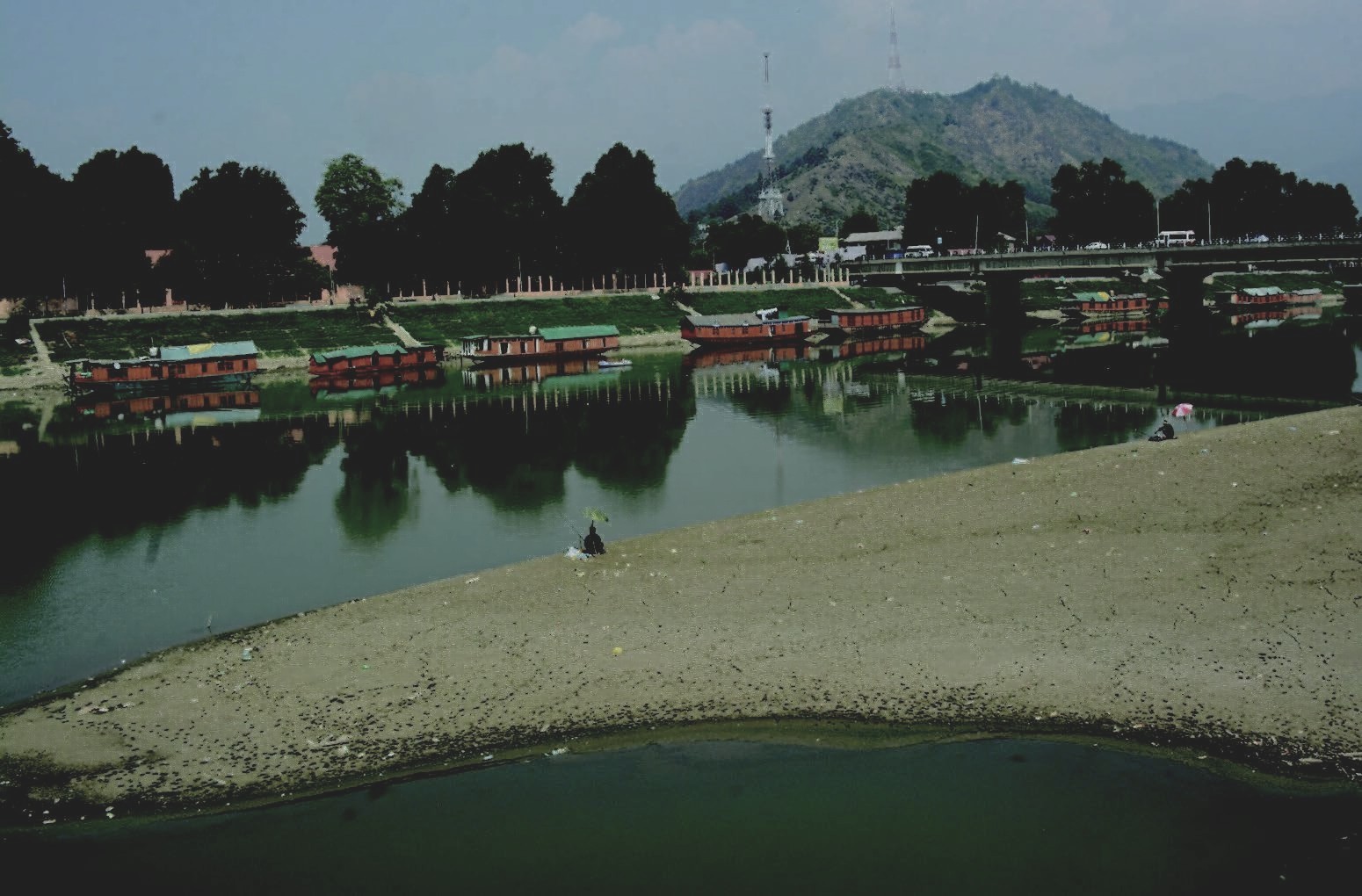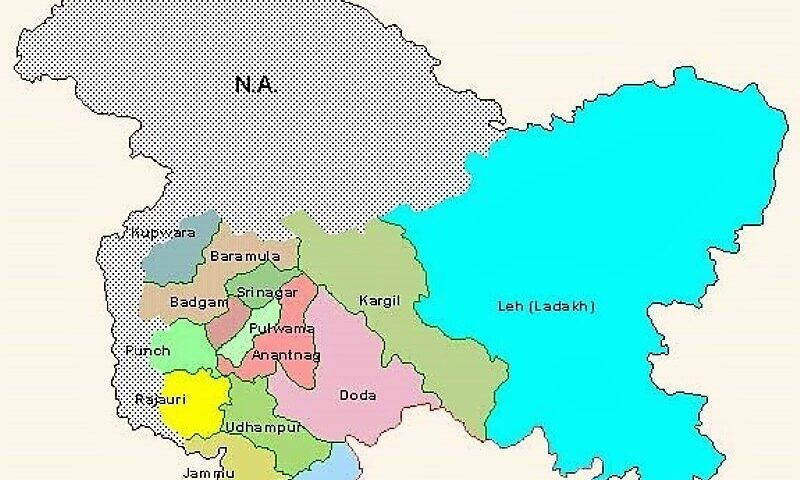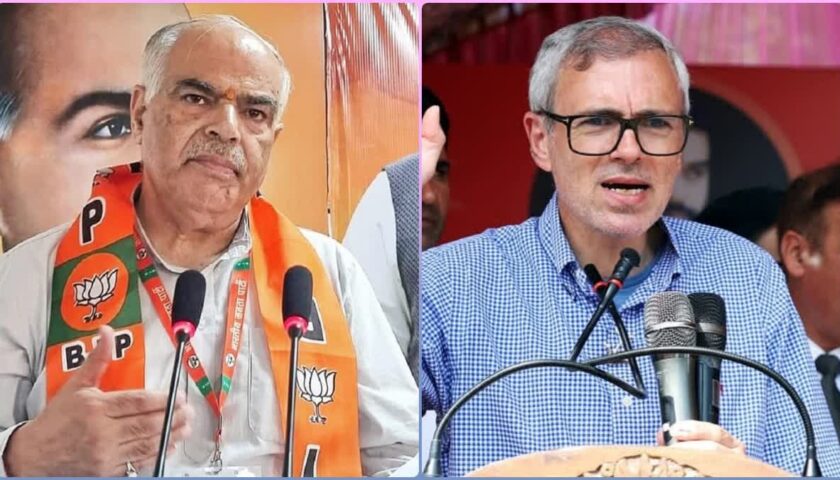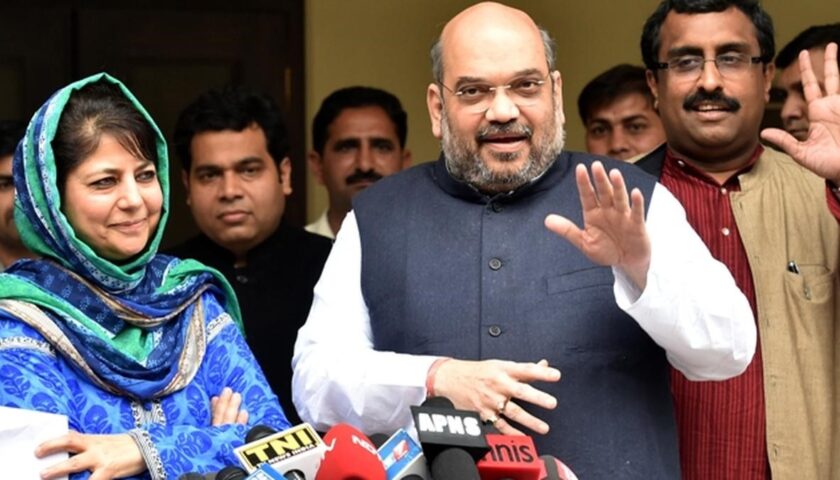Kashmir Heatwave 2025: How Extreme June Heat Is Draining Water & Threatening Agriculture in J&K
By: Javid Amin | Srinagar | 21 June 2025
Kashmir’s Scorching Summer: June Temps Smash 20-Year Records
On 19 June 2025, Srinagar sizzled at 35.2 °C, the hottest June day since 2005 and a full seven degrees above normal. The very next day the city breached its own record again, clocking 35.5 °C—6.3 °C above the seasonal average.
Even Jammu, usually far warmer than the Valley, recorded 36.5 °C, shrinking the typical gap between the twin capitals to a mere 1.3 °C. For context, the all-time June high for Srinagar is 38.3 °C (29 June 1978).
Meteorologists classify a heatwave in Kashmir when the maximum temperature exceeds the long-term average by 5–7 °C for three consecutive days. By that yardstick, most of June’s third week qualified as an official heatwave, making Kashmir heatwave 2025 one of the earliest and longest summer scorchers on record.
Why so Hot, so Early?
-
Persisting high-pressure cell stalled over north-west India, blocking moisture-laden winds.
-
Deficient Western Disturbances—only four significant systems crossed J&K between March and mid-June, half the usual number.
-
Urban Heat-Island effect: Srinagar’s built-up area expanded 29 % between 2001 and 2021, amplifying night-time warmth.
Climate reanalysis shows June 2024 across the Hindu-Kush Himalaya was already 0.9 °C warmer than the 1991-2020 baseline. June 2025 has added another +0.4 °C. Those tenths of a degree translate into thresholds crossed for snowmelt, evaporation, and, ultimately, J&K water shortage.
From Melting Snows to Parched Streams: The Hydrology of Decline
Kashmir’s water budget is a delicate relay race: winter snowfall locks moisture in the Pir Panjal and Greater Himalaya, spring sun releases it as slow snowmelt, and summer rains top up rivers and springs. When any leg fails, the baton drops.
01 Snow Deficit
IMD data show the Valley received 38 % below-normal snowfall in winter 2024-25, leaving glaciers thin-coated and reservoirs half-charged.
02 Glacier Retreat
The Kolahoi Glacier, the largest in the Valley, has lost ≈23 % of its area since 1962 and is retreating 16–18 m per year. Mass loss accelerates in hot, dry springs—exactly the pattern preceding the Kashmir heatwave 2025.
03 Run-off Collapse
With less late-spring snowmelt, stream gauges on the Doodganga and Ferozpur Nallah were already down 30 % by mid-May. The brutal June heat then spiked evapotranspiration, drying minor tributaries outright and cutting inflow to the Jhelum.
Result: Kashmir agriculture stress went from forecast to fact in a single fortnight.
Jhelum’s Alarming Plunge: Kashmir’s Lifeline in Crisis
At Sangam, the Jhelum’s gauge read –0.75 ft in early June—its lowest June level since digital records began. Downstream at Ram Munshi Bagh, the river barely skimmed 3.73 ft, a metre below the pre-monsoon norm.
Drying tributaries ripple out to Wular Lake, whose surface area has shrunk by an estimated 18 % compared with the 1990s, and to a drop of >50 cm in Dal Lake’s mean water level. Fisheries officials report carp survival rates dipping into the danger zone below 4 ppm dissolved oxygen during midday peaks.
Municipal water-supply intakes on the Jhelum now require supplementary pumping. Jal Shakti has deployed 200 tanker trips per day for Srinagar suburbs, while rural schemes rely on hastily bored tube-wells—an unsustainable stop-gap that pushes the aquifer deeper.
Farming on the Edge: Paddy & Apple Under Water Stress
Kashmir grows ≈145,000 ha of paddy and over 170,000 ha of fruit orchards, chiefly apples. Both are water-hungry; both entered June with a moisture deficit.
01 Paddy Parched
In Ganderbal, Budgam, Anantnag, and Kulgam, farmers reported that gravity canals ran dry in the crucial panicle-initiation stage. “If standing water isn’t restored within a week, we lose 30 % yield,” lamented Abdul Majid, a paddy grower in Budgam.
02 Apples Losing Juice
Apple growers from Sopore to Shopian saw a dual threat: heat shrank cell-size, while water shortage cut sugar translocation, yielding smaller, paler fruit. Extension scientists at SKUAST-K recorded 7–12 % fruit-drop in early cultivars after consecutive 32 °C days.
03 Economic Stakes
-
A 10 % fall in graded-A apple output equals ₹800 crore (~US $96 m) farm-gate loss.
-
Paddy shortfall will raise rice import bills for J&K Food Supplies by an estimated ₹120 crore.
That is why Kashmir agriculture stress is more than a rural story—urban tables, jobs, and state coffers hang in the balance.
Heat Across the Valley: Hill Stations Also Suffer
Traditionally cool resorts offered no escape:
| Station | 20 Jun Max °C | Departure from Normal |
|---|---|---|
| Pahalgam | 29.6 | +5.5 °C |
| Kokernag | 33.8 | +6.0 °C (2nd-highest June ever) |
| Gulmarg | 25.9 | +3.5 °C |
Forest officials recorded four minor ground fires around Kupwara and one in Dachigam National Park by mid-June.
The Wider 2025 India–Pakistan Heat Event
Kashmir’s ordeal is nested inside a subcontinental blob of simmering air. From Sindh (Jacobabad at 49.2 °C) to Punjab (Patiala at 43.6 °C), temperatures ran 5–8 °C above norms through late April and May.
A recent IITM-Pune study attributes a 30 % increase in severe pre-monsoon heatwave days over North India between 1981–2010 and 1991–2020. Its ensemble models project another +0.8 °C rise by the 2030s even under moderate-emission pathways—grim news unless mitigation and adaptation advance in lockstep.
Lives & Livelihoods at Risk: Health, Tourism & Economy
01 Health
Srinagar’s SMHS Hospital logged 38 heat-stroke admissions in the week of 15–21 June—triple the June average. Paediatric units flagged dehydration clusters among children in Dalgate and Hazratbal neighbourhoods.
02 Tourism
June occupancy in Gulmarg hotels fell from 68 % (2024) to 52 % as skiers skipped the parched slopes. Shikara owners on Dal Lake said rides dropped by 40 % after noon due to “oven-hot decks”.
03 Macro Impact
Preliminary estimates suggest the heatwave could shave 0.4 % off J&K’s GSDP this fiscal through lost farm output, tourism, and higher power imports.
Forecast Glimmer: Temporary Relief Ahead?
The 20 June IMD outlook paints a patchy reprieve: scattered to fairly widespread light rain from 23–26 June, followed by a likely monsoon onset around 24 June. Yet even a healthy 10–15 mm spell only lifts soil moisture for days; recharging aquifers and glaciers requires sustained, near-normal monsoon weeks—no sure bet in the era of climate volatility.
Voices from the Ground: Farmer & Environmentalist Perspectives
“Water is essential for paddy till the grain-filling stage. Without it, yields will suffer.”
— Ghulam Rasool, farmer, Budgam
“Apple colour this year is dull; the sun scalds the peel before sugars settle.”
— Shaista Bano, orchardist, Sopore
“Kolahoi’s snout is receding before our eyes; without glacier ice, the Lidder will be a trickle by August.”
— Dr Irfan Rashid, glaciologist, University of Kashmir
These testimonies humanise sterile statistics, grounding the Kashmir heatwave 2025 narrative in lived reality.
Policy, Planning & Adaptation: J&K Roadmap
-
Activate Heat-Action Plans—J&K Directorate of Health to issue graded alerts, open cooling centres, and stagger outdoor labour hours.
-
Crop Diversification Zones—restrict paddy in water-scarce uplands; incentivise maize, pulses, and high-density apple on drip.
-
Irrigation Modernisation—line canals, promote micro-sprinklers and controlled flooding; Jal Shakti’s ₹180-crore plan should target 6,000 ha this Rabi.
-
Rainwater Harvesting Mandate for new urban builds >300 m².
-
Glacier Conservation & Catchment Afforestation—learn from Ladakh’s artificial-glacier projects; pilot snow-harvesting berms in Sonamarg.
-
Integrated River-Basin Authority for Jhelum; revisit stalled Wular barrage concept to manage seasonal extremes.
Future-Proofing Kashmir: Building Resilience
-
Short Term (0–1 yr): Tanker rationing schedules, solar-powered community RO plants, summer school shift (7 a.m.–1 p.m.).
-
Medium Term (1–5 yrs): 40 MW of rooftop solar to trim grid load; revival of traditional zab water-sharing pacts; agro-advisories via WhatsApp in Kashmiri & Urdu.
-
Long Term (5 yrs+): Glacier-monitoring satellite task-force; climate-smart villages; eco-tourism codes capping daily visitors at fragile meadows.
Without such layered defences, J&K water shortage will morph from seasonal scare to chronic crisis.
FAQs
Q1 — Why is June 2025 hotter than previous Junes?
Combination of low winter snow, persistent high-pressure, urban heat islands, and broader warming trends.
Q2 — Will the monsoon save Kashmir’s crops?
Relief yes, salvation maybe. Farms need consistent rainfall through July–August; erratic showers cannot make up early-season deficits.
Q3 — Can the Valley shift away from paddy?
Partly. Lower terraces may adopt maize or millets, but food-security and cultural factors mean rice will stay—albeit under smarter irrigation.
Q4 — How fast are glaciers retreating?
Kolahoi has shrunk ~23 % since 1962 and is losing up to 18 m/year.
Executive Summary & Call-to-Action
The Kashmir heatwave 2025 broke 20-year temperature records, drained the Jhelum, and exposed Kashmir agriculture stress in paddy fields and orchards. Heat-related ailments spiked, tourism slumped, and the spectre of a J&K water shortage loomed large. Short-term rains may ease the sting, but without structural reforms—crop diversification, irrigation overhauls, glacier protection, and urban cooling—the crisis will rebound stronger.
What you can do:
-
Residents: Harvest rain, plant shade trees, follow heat advisories.
-
Farmers: Adopt micro-irrigation, alternate crops, consult agri-hotlines.
-
Policymakers: Fast-track Heat-Action Plans, fund glacier studies, enforce water-wise zoning.
-
Tourists & Businesses: Opt for eco-conscious visits, support local conservation NGOs, and cut single-use plastic that worsens urban heat islands.
The Valley’s natural bounty and human ingenuity have met crises before; with informed, inclusive action, they can do so again.




